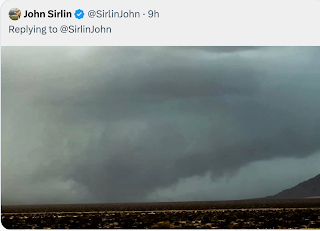Hurricane Florence Update, 5:30pm Wednesday
The hurricane is now close enough to the coast to give some perspective on its size.
Below is the latest forecast from the National Hurricane Center. The amber is the diameter of the
tropical storm force winds (sustained 40 mph with higher gusts) and the brown is the diameter of the hurricane force winds (sustained 75 mph winds with higher gusts). The area of hurricane force winds is huge, far larger than Hurricane Sandy's.
The clock is running out but there is still time to take adequate precautions in advance of Florence, I'd like to do a final rundown before in hopes of helping my readers prepare. Checklist is here.
Below is the time by which precautions should be completed at your location. The map shows the earliest time of arrival of sustained 40 mph winds (with gusts to 60 mph). Beyond that time power failures can begin and driving gets more hazardous, especially for high profile vehicles.
Now we break Florence down into its three types of hazards.
With the possible southwest movement of Florence along the SE North Carolina and northeast South Carolina coasts, there is even the possibility the counterclockwise winds will send the water out to sea (uncovering parts of the beach) then, as the center of Florence passes the location, the storm surge comes in. It is a recipe for drowning.
In addition, the weather satellite measured waves up to 83 ft. (!!) with the hurricane. The combination of surge and giant waves will cause areas to submerge that have never before been submerged. Below is Jim Reed's photo of the storm surge destruction of Hurricane Ike ten years ago.
Pick your location. Assume the higher wind speed (a "worst-case scenario"). Prepare accordingly. Utilities are saying 75% of homes may lose power at one point or another and that some will lose power for weeks.
On both maps bright purple is more than ten inches. Major to catastrophic flooding is likely.
For your own safety, get out if ordered. In addition to keeping you safe, it is also for the safety of first responders.
There are more than 11,000,000 homes at risk per Stephen Strader. The fewer who stay in high risk areas, the better for everyone.
Maximum winds are now 120 mph.
Below is the latest forecast from the National Hurricane Center. The amber is the diameter of the
tropical storm force winds (sustained 40 mph with higher gusts) and the brown is the diameter of the hurricane force winds (sustained 75 mph winds with higher gusts). The area of hurricane force winds is huge, far larger than Hurricane Sandy's.
The clock is running out but there is still time to take adequate precautions in advance of Florence, I'd like to do a final rundown before in hopes of helping my readers prepare. Checklist is here.
Below is the time by which precautions should be completed at your location. The map shows the earliest time of arrival of sustained 40 mph winds (with gusts to 60 mph). Beyond that time power failures can begin and driving gets more hazardous, especially for high profile vehicles.
Now we break Florence down into its three types of hazards.
- Storm Surge
- Winds
- Freshwater (river, stream and lake) flooding.
Storm Surge
Rule #1, you cannot outrun storm surge! Don't believe me? Here is Jim Leonard's video of a storm surge coming into Guam.With the possible southwest movement of Florence along the SE North Carolina and northeast South Carolina coasts, there is even the possibility the counterclockwise winds will send the water out to sea (uncovering parts of the beach) then, as the center of Florence passes the location, the storm surge comes in. It is a recipe for drowning.
In addition, the weather satellite measured waves up to 83 ft. (!!) with the hurricane. The combination of surge and giant waves will cause areas to submerge that have never before been submerged. Below is Jim Reed's photo of the storm surge destruction of Hurricane Ike ten years ago.
You don't want to be there when this occurs!
Hurricane Winds
I'm going to present two ECMWF images. These represent two forecasts of peak gusts from Florence. Power failures begin to occur around 50 mph given the wet conditions already existing.Pick your location. Assume the higher wind speed (a "worst-case scenario"). Prepare accordingly. Utilities are saying 75% of homes may lose power at one point or another and that some will lose power for weeks.
Flooding Rains
Here are two computer models. Both have areas near the coast of more than 30 inches. Amounts farther inland are more than enough to cause flooding. There are also reasons to believe that the mountain areas may have more rain than forecast.For your own safety, get out if ordered. In addition to keeping you safe, it is also for the safety of first responders.
There are more than 11,000,000 homes at risk per Stephen Strader. The fewer who stay in high risk areas, the better for everyone.














Comments
Post a Comment